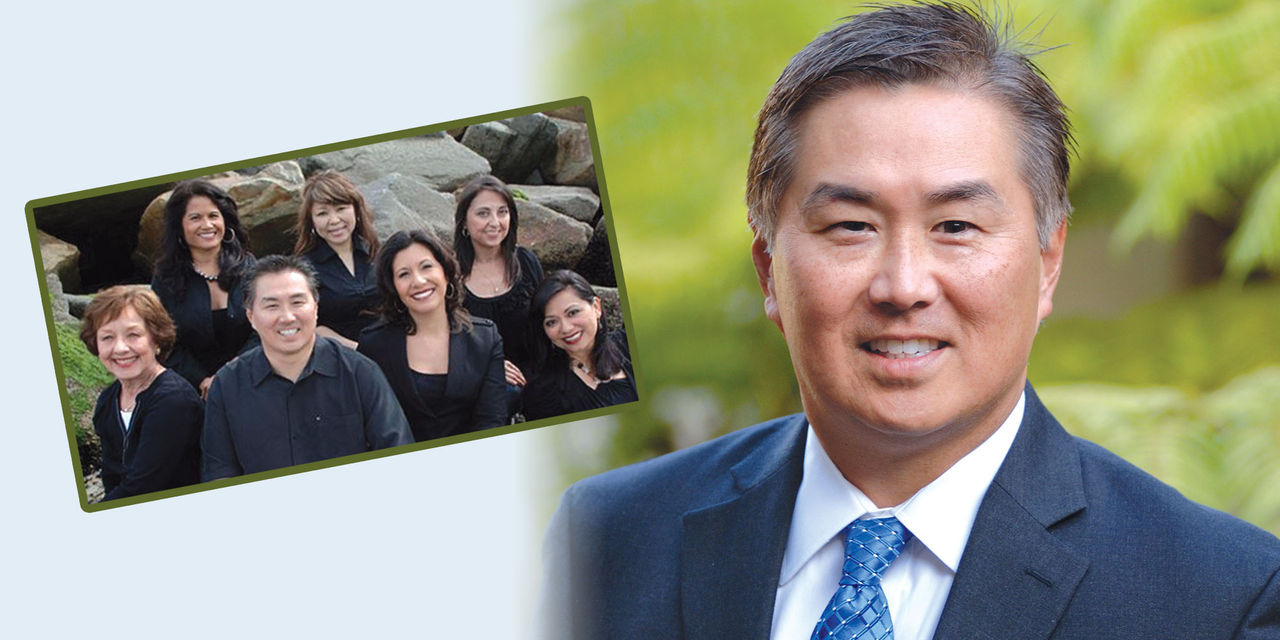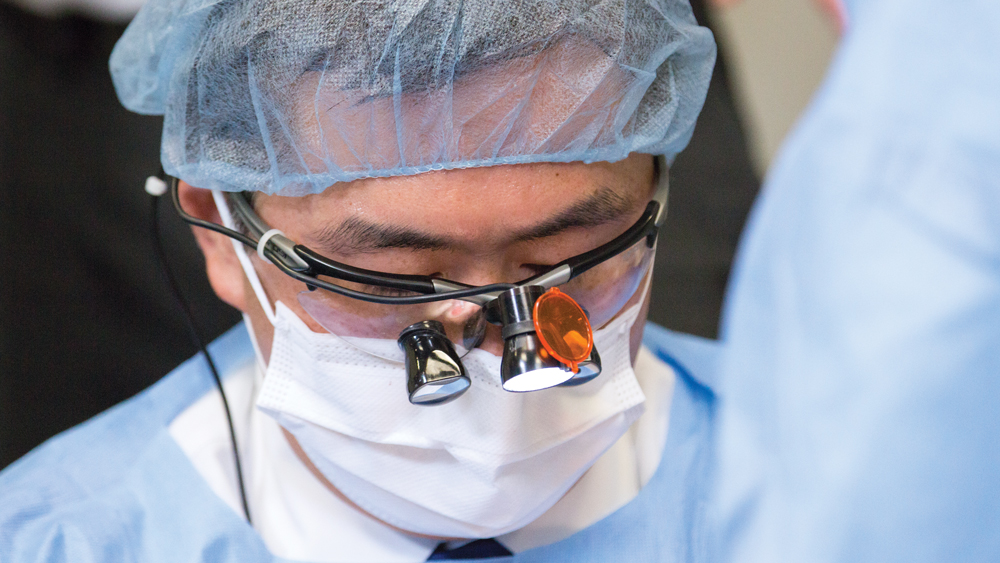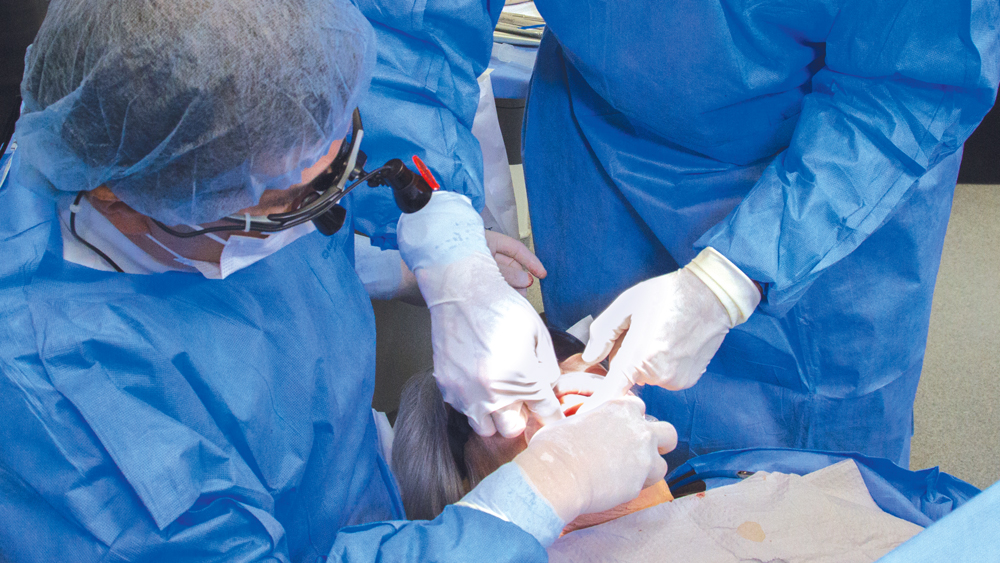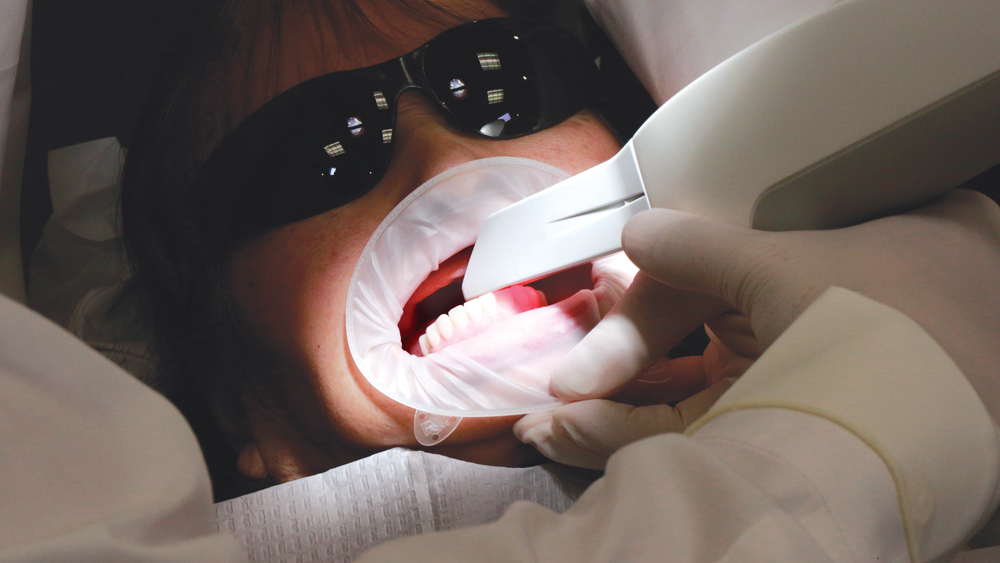One-on-One Interview with Dean Saiki, DDS

Dr. Dean Saiki helms a private practice in San Diego County, California, where he sets a rigorous clinical pace, from placing implants to mastering digital tools to jumping into the artistry of staining and glazing chairside-milled restorations. Away from the chair, he invests time in growing a network of trusted specialists and collaborating with business-side experts. Discover how Dr. Saiki drives his practice’s success with patient-centric efficiency and what he’s eyeing for the future.
DR. SIAMAK ABAI: Thanks for sitting down with me today, Dean. Can you share with us a little bit of history of how you got to where you are now, from dental school to how you ended up in San Diego County?
DR. DEAN SAIKI: Sure. I graduated from dental school in 1988 from the University of Southern California, and right out of school I did a year of practice as an associate in Orange County, in the Huntington Beach area, with one of the instructors at USC. It was nice having a job right after I passed the board.
SA: USC has a great program. And the move to San Diego was soon after the first year in Huntington Beach, right?
DS: Yes. A few colleagues said, “Hey, come on down to San Diego.” So I did. There I started working as an associate in a number of different offices until I finally found a home. I ended up working with another colleague from dental school, and we purchased and took over the existing private practice of a dentist with whom I was an associate. That went on for about six years before my partner decided he was going to go back to school to become an endodontist.
SA: Interesting. Leaving you as the sole owner?
DS: Exactly. I basically inherited the practice as a sole owner.
SA: And how long ago was that? How many years have you been in this practice?
DS: We bought the practice in 1990, and I’ve been at this same practice now all by myself for the last 20 years or so.
SA: So it’s basically a solo practice, then?
DS: Solo practice, correct. Single doctor, one and a half hygienists, basically.
SA: Since you’ve been in that location, have you noticed any sort of transition in the dental field, whether it be corporate dentistry coming about or different offices popping up? And if so, has that affected you?
DS: Absolutely. In fact, we’ve even had reps from corporate dental organizations come in and ask if I wanted to sell my existing practice and become part of the corporate model. In terms of how it affects my practice, I think the competition keeps me on my toes. Being an older grad, I didn’t have a ton of experience with the business and marketing aspects of owning a practice, and now that corporate dentistry is here, it keeps you abreast of what everybody else is doing, and makes you stay on top of things, like advertising and social media.
SA: From what I can tell, corporate dentistry has picked up that area of dentistry where a lot of people don’t have access to dental care. So what they’re doing is a lot of the HMO patients, and I feel that if you’re not part of corporate dentistry, you end up treating more PPO patients or fee-for-service patients.
DS: Correct. When we first purchased the practice, there was a capitation model already in place, and I would say it was probably 50/50 private patients versus capitation-type patients. We tried to transition out of that as quickly as we could, but admittedly it took a few years to finally get to just fee-for-service.
SA: Did you feel that the capitation model was beneficial because they give you a certain amount of money every month?
DS: It seems like it could be, but I never really liked that specific model because patients would come in thinking things were covered, and we would have to tell them it wasn’t and then re-explain their coverage. I actually spent a ton of time doing that and less time doing dentistry.
Now that we’ve cycled out of that, we get to really focus on the patients’ needs and get to be more patient-specific, rather than plan-specific.
SA: Instead of explaining what the plan is going to cover and what it’s not.
DS: Exactly. So I definitely prefer the fee-for-service model, but admittedly that’s what the corporate guys are now doing; they’re trying to compete with us on that front by being more efficient with having more in-house specialists. I think it’s up to general practitioners to really bolster their skills in making sure they are up to date on the marketing aspects of what they’re competing against, as well as making sure their relationships with their specialists are really good, which I think has always been key.
SA: I completely agree. Maintaining relationships with specialists is especially important today.
DS: Absolutely, because sometimes patients want to go to a specific specialist or a specialist on their plan, but the GP and the specialist aren’t always in the same area. Having specialists in your area who you know and trust is a great benefit for you and your patients.
SA: So what other aspects of your practice do you find beneficial and important to remain relevant?
DS: Going digital, without a doubt. We switched over to a paperless office in 2008. It was difficult transitioning away from pencil and paper, and learning the workflow; we were so used to having hard copies of everything. It was very time-consuming, but now that we’ve been switched over it’s kind of like your cell phone — you can’t figure out how you ever lived without it. It’s so much easier; it’s much more efficient. I actually think patients get a much higher quality of care. Our workflow has been completely streamlined, and we can get information to specialists very, very quickly.
SA: That’s excellent. Great for your practice and great for your patients.
DS: In fact, just recently a patient took a picture of his broken tooth and emailed it to me, and we made an appointment. That’s something where in the past, we’d have to schedule an appointment and bring them in, and then oftentimes we’d just say, “Well, we can’t really do anything; we have to refer you out.” Or, “We need more time.” But now that we’re digital, it really helps our workflow. I’d say it’s also more accurate in terms of things like impressions, communication with laboratories, and things like that. So I’m very happy to have transitioned over to a digital workflow.
SA: Do you miss anything about the old way you were doing things?
DS: Well, I really see very little upside to the old way, but I will say that sometimes it is a bit frustrating when I forget my passwords.

SA: Oh, sure. The perils and pitfalls of technology.
DS: Yes. Managing passwords and keeping all the technology up to date with hardware upgrades and software updates. I just have to be a little more consistent with my passwords and my user log-ins, but all that being said, those are the only drawbacks that I’ve found so far.
SA: So how does this transitioning to digital translate into patient treatment? Do you find it to be more efficient?
DS: It’s a lot more efficient. Everything can be fabricated with a lot less back and forth for the patient in terms of impressions going back and forth to the laboratory. A lot of these appointments get reduced and sometimes completely skipped because of the digital impressions. And so I think not only do the patients spend less time in our office in total, but also I think that the restorations are much more accurate.
SA: I’m sure your patients appreciate that as well.
DS: Having one appointment versus multiple appointments is huge for patients, especially in terms of single crowns and digitally planning for implant treatment. We can let patients know of additional procedures, like grafting, before the surgery so they know exactly what to expect.
SA: Excellent point. So you’ve been practicing for a while, but you’re still a relatively young dentist. What would you suggest for a dentist who is later on in his career, but wants to try something digital and upgrade his office? What would you say is the one thing you would not be able to live without?
Having one appointment versus multiple appointments is huge for patients, especially in terms of single crowns and digitally planning for implant treatment.
DS: I’d say I wouldn’t be able to live without any of it, because I use it all: digital X-rays, digital charting, digital impressions and CAD/CAM for crown fabrication. But I will tell you that patients don’t really notice the digital charting aspect. Some of them do make comments about the X-rays; although aside from the speed in which we can see the images, there really isn’t a huge advantage from a patient standpoint there. What they do notice is the in-office mill and digital impressions because they no longer have to choke on impression material. And of course, fabricating a crown in a single appointment is popular and a huge benefit to patients. Some practitioners don’t like doing lab work, but I like having that control. I like knowing where to bulk up restorations and knowing what specific coloration and characterization the patient needs when we’re trying to match restoration esthetics.
SA: What would you say the learning curve is for that?
DS: Well, everybody is different, and I’m kind of obsessed with getting it right. It did take me a while, much like the transfer from paper charts to digital charts. Some people are going to learn more quickly than I did, but I wouldn’t say that it’s necessarily going to be long and arduous for everyone. I think, depending on how quickly you can learn computer skills and learn how to work the software, it could be relatively quick.
SA: And having an area to do stain and glaze at your practice makes it not that big of a deal.
DS: Yes. I really enjoy that aspect of it. That’s the artistic side of me. I really enjoy doing staining and glazing and things like that, and being able to add more natural-looking contours in the crown anatomy. Those are all aspects that I enjoy. I will tell you that most of the software is pretty well-equipped and the materials have gotten much better than the first generation, and so I think it makes it a lot easier for clinicians.
SA: So that way you don’t get bored when you practice.
DS: Absolutely. It’s actually really rewarding when you get a good-looking crown and you know that you fabricated it.
SA: And from there, you found yourself wanting to do more with digital technology? How did that develop?
DS: When we first started, it was like going back to school. I had to figure out the best way to produce the best and longest-lasting restoration. Then the next step in expanding my digital skill set from single units was moving toward doing multiple units, bigger cases, and expanding into doing fixed bridge work, inlays, onlays, veneers and full-mouth esthetic cases. That’s when I really got interested in intraoral scanners and their capabilities. We were trying to figure out the accuracy of these things and see if we could we use them to make digital models, fabricate guides and do implant planning.
SA: There are certainly a lot of applications for intraoral scanners, and I’m sure there will be more in the future.
DS: We have attempted dentures, and obviously there was a learning curve there, but creating dentures from digital scans is an amazing use of the technology. Sometimes patients have teeth that are too mobile to take a traditional impression, or they have a severe gag reflex.
Sometimes digital scanning can actually make it a little bit easier to get an impression of a full arch as opposed to using an impression tray. Exploring with the scanner eventually led me to digital treatment planning for implant placement, and then to digital restorations for implants. I’m now able to do my own custom abutments as well as implant crowns.
SA: Oh, that’s great. And you do all that chairside?
DS: Yes. Now I will say that while it is possible, and I have done same-day implant crowns, it does take more time than a regular crown. There’s a certain point where it becomes less patient-friendly when they have to wait three hours while we fabricate the abutment, cement in the titanium base and mill the crown. So in our office, if we are doing implant crowns, we typically won’t do them in one day. We’ll take the implant-level impressions scans one day and then come back and deliver on a second.

SA: OK. The turnaround time is just one day, so you bring them back the next day?
DS: Yes, that is possible, but usually the delivery is based on the patient’s availability. It’s still done much quicker than before, and on our bigger cases that have multiple restorations, we just send the files digitally to the laboratory and they’ll fabricate the multiple abutments, multiple crowns, implant-supported bridges or frameworks over multi-unit abutments, and things like that.
SA: With your office being so involved with digital dentistry and in-office crowns, where do laboratories fit in for you? You mentioned you’ll have your lab do the more complex cases.
DS: That’s right. But even though many clinicians, including myself, are going digital, I still think it’s important to keep good relationships with laboratories.
I work with Glidewell and smaller local labs, and I believe there’s always going to be a place for the dental laboratories. We do a lot of the stuff in-office, but I still need somebody to help me with a relines or fabricating a partial or a denture; there’s still a need for those hands-on dental technicians.
SA: I think having a laboratory to help you through those cases will always be a part of the clinical side of dentistry.
DS: Yes, and I really do think it’s all about maintaining relationships not only with labs, but also with specialists. I think it keeps you on top of things. It’s really difficult if you’re practicing day to day to learn about the latest material or the latest procedure. And so having these relationships with labs, manufacturers and specialists that you can share ideas between can help you to stay relevant.
SA: So what would you say is your favorite procedure right now? Something that gets you excited when you go to the office and you see that patient on the schedule?
DS: One of my favorite things to do is guided surgery for implant placement. It’s the part of the job that I love the most right now. When you’re able to restore missing teeth and you see patients light up when those restorations get placed, you really feel like you’re a complete dentist. On one hand we learned how to take teeth out in dental school, but, for me at least, I didn’t necessarily learn how to put large segments of teeth back in. We can do small segments with fixed bridge work or small segments with partials, but to be able to do these bigger cases is really rewarding. We’ve even done all-on-four cases and all-on-six cases using our digital technology throughout the planning, placement and restorative phases.
SA: The small cases are fun, too. I can’t tell you how many patients come in with a 3-unit bridge, and they tell me: “Please take off the 3-unit bridge and place an implant in the middle. I want separate crowns.”
DS: I will tell you that single-unit implant placement is far more common than the bigger restorative implant cases and is just as rewarding.
SA: Now, how did you take that leap into implant dentistry?
DS: I was very fortunate to work with a number of local specialists placing implants at a very high level. They were very generous with their time and mentoring. After years of doing the restorative work and seeing how the technology in implant planning had advanced, I felt very comfortable, after getting additional education, to begin placing implants myself. The other half was having a close friend and patient egg me on to place an implant for him. Starting with someone that I felt very comfortable with was very important for me. I still work very closely with my specialists. I don’t do any big grafts or sinus lifts. We’ll do socket preservation grafting, but for the most part I still have a very strong relationship with a number of the periodontists and oral surgeons, and always get their input, especially on some of the bigger cases.
SA: My opinion has always been that implant dentistry doesn’t necessarily belong to one or two specialties. I think it should be spread out for everyone to have as a tool to treat patients with the best care possible. I think with more GPs placing implants it’s gotten some of the specialists to stay on their toes, like, “Maybe I need to place those implants at a better location so that I get referrals and I’m not losing out on patients.”
DS: Yes, I could see that. Patients now are so much more aware of implant dentistry in general, and there are definitely implants that can be placed by GPs. There are a ton of patients who could benefit from GPs placing implants, and sometimes they appreciate not having to go to another office to see a specialist. They appreciate that you can take care of minor situations that once would be relegated to just specialists.
SA: I had a very close friend who went through an endodontics program and then an additional implant program. So now he has the advantage where if a patient is referred to him and he deems that the tooth is not restorable, he presents the option to the patient of removing the tooth and placing an implant. So that’s a very important skill set.
DS: Absolutely, and I agree, I don’t think implant placement should just be relegated to GPs, periodontists and oral surgeons. I think endodontists and orthodontists could also benefit from having that skill. I think that if you graduate from dental school you have the skills to do that; it’s just a matter of what your comfort level is.
SA: Absolutely. Let’s talk about your practice. What do you think is the best model for you to run a small business where there are a large amount of dentists?

It’s really difficult if you’re practicing day to day to learn about the latest material or the latest procedure. And so having these relationships with labs, manufacturers and specialists … can help you to stay relevant.
DS: I have little business training, and because of that I’ve made a lot of mistakes on the business side. I think we can get tunnel vision, focusing only on treating. We think that everything will work out if we just keep doing our best with the handpiece and patient communication, but you really do need to have business and marketing skills. A lot of times, when I was making those decisions on my own without seeking the help of my accountant or the IT guy, I was making horrible decisions. Trying to design a website on my own was not the smartest thing I could have done.
SA: And it’s often neither cost-effective nor efficient. Have a professional do it and you do what you do; let the other professionals do what they do best.
DS: Absolutely. So for me it was all about gaining the trust of these business-side specialists.
SA: How do you feel about outsourcing digital treatment plans and getting back the surgical guide after discussing it?
DS: When we first started, that’s how we did it. I worked with someone who assisted in the digital planning aspect of it, and it was great; it really helped me in the beginning. As we got more productive, it kind of forced me to learn how to use the digital planning software to design my own guides.
SA: Are you open to the idea of a practice where you have the digital design software, a printer to print your own surgical guides, and a mill to fabricate some sort of temporary or restoration?
DS: Yes, absolutely. My next big purchase is probably going to be a model printer. That’s a piece of equipment that I believe can be shared by a number of colleagues. I can get six or eight clinicians together to invest in a single piece of design software and a single printer, and we could become our own little surgical guide factory.
We think that everything will work out if we just keep doing our best with the handpiece and patient communication, but you really do need to have business and marketing skills.
SA: And maybe have it in a facility that’s close to all the offices or maybe even in one office, and have somebody else come in if they need to use it.
DS: Exactly, or we could train somebody’s assistant to work the machine. The cost of printers is coming down, and as long as you have people who are willing to take on the challenge of learning how to use the latest technology, it will be very beneficial to clinicians.
SA: I agree fully. What’s the next step? What’s the next challenge for you?
DS: Well, I always want to do better. I think I’m wired to try to do better, whether it’s being more efficient, being more cost-effective, or handing off one of the business aspects to my marketing guys, accountants or my front office. Those are all going to be the challenges that I see in the near future.
SA: How about maybe expanding to a different location or another practice — anything like that?
DS: I think at this stage in my career it’s definitely a goal. You’re touching on something that I’ve always thought about: working with other GPs or specialists and trying to come up with a more efficient way to practice by sharing overheads and office space. It frees up more time to spend with my family and still lets me provide a very high quality of care in a more patient-centric office.
SA: That’s great. Growth is hugely important in any field. Thanks for sitting down with me, Dean. I wish you the best in the next chapter of your career.
DS: Thank you. I appreciate it.




